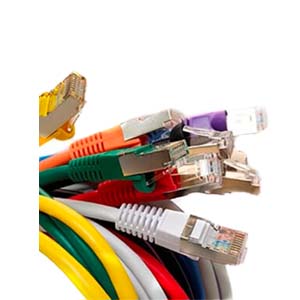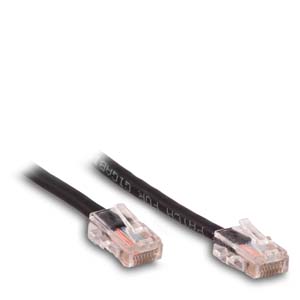Cables Blog
4 Symptoms of a failing cable you should know
Nothing lasts forever. The lifespan of a cable depends on how well it gets treated, but all of them will eventually start to suffer from wear and tear. Fortunately, replacing a failing cable is usually quite cheap and easy. The hardest part is recognizing when the cable is starting to break down in the first place.
by Vikas Dayal • May 19, 2017
Nothing lasts forever. The lifespan of a cable depends on how well it gets treated, but all of them will eventually start to suffer from wear and tear. Fortunately, replacing a failing cable is usually quite cheap and easy. The hardest part is recognizing when the cable is starting to break down in the first place. There are a few telltale signs of trouble that everyone should know, and learning to recognize those signs is the easiest way to diagnose a problem with a damaged cable.
Slow Connections
Slow network connections are one of the most important warning signs for a damaged Ethernet cable. A damaged cable is not the only thing that can cause this problem, but it is one of the common causes, so it's enough to warrant examining the cable for other signs of damage. Both intermittent and chronic slowness can indicate a damaged cable. Occasional slowness that comes and goes is usually the result of a cable that is starting to break, but can still transmit data when all of the parts are in the right positions. Constant slowness usually means that the damage is worse.
Losing Image Quality
Damaged HDMI cables usually cause a significant loss to image quality on the screen to which they are connected. That can come in several different forms. Discoloration is the most common one, and the tinting tends to be uniform across the entire picture. Blurred images and problems with the screen's resolution are also common, but not quite as much as discoloration. In some cases, the picture will fail to display at all. The image loss can be intermittent or permanent. Both cases are strong indicators that the HDMI cable is broken. There are other issues that can cause most of these problems, but the HDMI cable is the first place that you should look when diagnosing them. A broken cable is the most common culprit, and it's also the easiest one for the average user to check.
When Wiggling Helps
It is usually best to avoid wiggling cables, but it's impossible to avoid it completely. When the cable is in good condition, wiggling it won't cause any changes in the connection unless it causes the cable to come out of a port. That isn't the case when the cable is damaged.
Wiggling a cable that has a broken wire can cause that wire's connection to get better or worse, depending on how it changes the wire's position. Cables that have bent pins at the end can also change when wiggled, since the movement will adjust the way that the pins fit into the port. Wiggling a cable will not have any impact on other parts of the computer system, so it is one of the best signs that a broken cable is causing trouble. On the other hand, it can also cause a cable that is starting to break down to get worse by putting it under more stress, so it's best to use it as a diagnostic technique as sparingly as possible.
Inconsistent Performance
A cable that is in good condition will offer consistent performance under most conditions. Some variance is normal and caused by factors other than the cable, but it should change within a fairly narrow range. Significant variance is usually a sign that the cable has been damaged. It happens because cables depend on physical connections, and the quality of that connection is much more variable in a damaged cable than in a good one. This is often the earliest sign of damage, since even minor damage can lead to temporary changes in performance for a cable that can still work most of the time.










